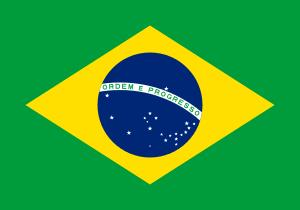The Brazilian military government was the authoritarian military dictatorship that ruled Brazil from March 31, 1964 to March 15, 1985. It began with the 1964 coup d'état led by the Armed Forces against the democratically elected government of left-wing President João Goulart and ended when José Sarney took office as President. The military revolt was fomented by Magalhães Pinto, Adhemar de Barros, and Carlos Lacerda, Governors of Minas Gerais, São Paulo, and Rio de Janeiro, respectively. Brazil’s military regime provided a model for other military regimes and dictatorships around Latin America, systematizing the “Doctrine of National Security,” which justified the military’s actions as operating in the interest of National Security in a time of crisis, creating an intellectual basis upon which other military regimes relied.The Brazilian Armed Forces acquired great political clout after the Paraguayan War. The politicization of the Armed Forces was evidenced by the Proclamation of the Republic, which overthrew the Empire, or within Tenentismo (Lieutenants' movement) and the Revolution of 1930. Tensions escalated again in the 1950s, as important military circles joined right-wing activists in attempts to stop Presidents Juscelino Kubitschek and João Goulart from taking office, due to their perceived alignment with Communist ideology. While Kubitschek proved to be friendly to capitalist institutions, Goulart promised far-reaching reforms, expropriated business interests and openly espoused sympathy with the Communist Bloc.In 1961, Goulart was allowed to take office, under an arrangement that decreased his powers as President with the installation of Parliamentarianism. The country returned to Presidential government in one year, and, as Goulart's powers grew, it became evident that he would seek to implement leftist policies such as land reform and nationalization of enterprises in various economic sectors, regardless of assent from established institutions such as Congress. Society became deeply polarized, with many fearing Brazil would join Cuba as party to the Communist Bloc in Latin America under Goulart. Influential politicians, such as Carlos Lacerda and even Kubitschek, media moguls (Roberto Marinho, Octávio Frias, Júlio de Mesquita Filho), the Church, landowners, businessmen, and the middle class[citation needed] called for a "counter-revolution" by the Armed Forces to remove the government.[citation needed]On March 31, 1964, rebel troop operations went underway. Goulart fled to Uruguay on April 1. The military dictatorship lasted for twenty-one years; despite initial pledges to the contrary, military governments soon enacted a new, restrictive Constitution, and stifled freedom of speech and political opposition with support from the U.S. government. The regime adopted nationalism, economic development, and opposition to Communism as guidelines. The dictatorship reached the height of its popularity in the 1970s, with the Brazilian Miracle, even as the regime censored all media, tortured and banished dissidents. In the 1980s, as other military regimes in Latin America fell, and the government failed to stimulate the economy and abate chronic inflation, the pro-democracy movement gained momentum. The government passed an Amnesty Law for political crimes committed for and against the regime, relaxed restrictions on civil liberties, then held Presidential elections in 1984 with civilian candidates. Since the 1988 Constitution was passed and Brazil returned to democracy, the military have stood under institutional civilian control, with no relevant political role.

Fecha de disolución
1985-03-15
Año de disolución
1985
Fecha de fundación
1964-03-31
Año de fundación
1964
Lema
"Ordem e Progresso"
("Order and Progress")



Aipatu
0